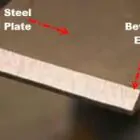Welding is always accompanied by UV light, high temperatures, and exhaust fumes, which can be more or less dangerous depending on how the welding is done. The fumes from welding often have harmful chemicals in them, but if the right welding extraction system is used, this is not a problem. This blog will tell you why is it important to get rid of welding fumes.
How does this hurt the breathing system?
When you breathe in, the pollutants go into your airways and then into your lungs through the bronchial tubes. Nanoparticles, also called particulates, are so small that they can go right through the cell wall and into the pulmonary alveoli. It is very important that this doesn’t happen.
The main places you will find these harmful airborne contaminants is in high concentrations are in the construction of plants, containers, machines, and steel. You will find them even in the automotive industry and its parts suppliers, rail vehicle manufacturing, and shipbuilding. It can be removed using fume extraction welding torch with welding fume extraction system.
On-Torch Extraction: Best Welding Results and Best Safety
The holy grail is to get rid of all or almost all welding fumes at the source.
Factors that affect how well the extraction works:
How welding works: Most of the fumes come from the welding process itself (e.g., welding high-alloy materials)
Torch geometry: How the shielding gas flows and how much comes out will depend a lot on how you make the torch.
Welding position: for example, hot fumes go up and CO2 goes down.
Capacity: If the capacity is too low, the extraction efficiency will go down, and if it is too high, the shielding gas will be out, which will cause welding problems.
Shielding gas: The shielding gas and how fast it flows affect how well the welding turns out and how well the extraction works. Different gases have different reactions. For example, CO2 gives off more fumes than argon.
Shielding gas replaces the ambient air. It keeps oxygen and other gases in the air from getting into the weld seam. Without shielding gas, it is not possible to make a clean, durable weld seam.
The Challenge Lies in Removing Welding Fumes but not the Shielding Gas
There is a lot of oxygen when you use a direct welding fume extraction. So, shielding gas will also be out. This could cause pores to form in some materials. But using a lot of shielding gas to stop this from happening uses up a lot of shielding gas.
For a high-quality weld seam, the shielding gas flow rate should be between 13 and 16 l/min. The Fronius fume extraction welding torch is for the fumes from welding flow to the side. And when they get there, it is trapped. This means that we have to reduce the flow rate of the shielding gas. With a flow rate of 10 l/min (laboratory values), you can get high-quality welds, which could save you a lot of money. Other torches with nozzle openings on the torch tip take the shielding gas directly, so they need a higher shielding gas flow rate of at least 13 to 16 l/min to make a good seam.





